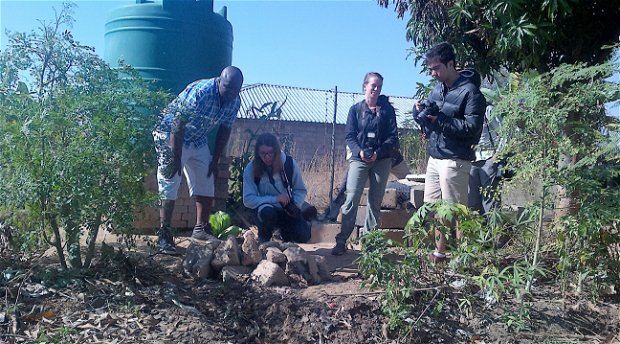Inspiring Community Gardens

"To plant a garden is to believe in tomorrow" – Audrey Hepburn
On a Saturday morning the Stanford University Seminar Participants visited the community garden project that Trygive Nxumalo initiated in his home town of Acornhoek.
More than 90 vegetable- and fruit gardens since have been created by this energetic man who simply cares about his fellow villagers. With the food prices rising sharply in South Africa due to a severe draught and a dwindling economy, the gardens inside villagers courtyards give a meaningful activity to the communities around Kruger Park hit by high unemployment rates. Indigenous plant nurseries set-up with Trygive’s help provide valuable income for elderly villagers and planting them help combat worldwide climate change. We were privileged to be shown around his home town and left deeply motivated by the results that Trygive Nxumalo has made on uplifting his community.
One of the tree’s that have been planted for its nutrional benefits at Rooiboklaagte village, Acornhoek is the Moringa tree, Moringa oleifer. Its indigenous to North-Western India. Modern food processing and farming methods have robbed much of our food of the nutritive qualities that make it healthy for our bodies. With the advent of big agribusiness (mega-corporate farming), the use of pesticides, fungicides, herbicides and chemical fertilizers have significantly increased crop yields, but this heavy use of chemicals has produced fruits and vegetables that are not as high in nutrients as they have been historically.
Through the growing of Moringa trees along with other organic foods, the families in this arid area closeby Kruger Park can achieve nutritional freedom and return to an era when the food we eat is pure and unadulterated. Moringa may be the closest thing to a multi-vitamin in a single plant source, helping to fill in any gaps that may exist in one's normal diet, thus helping to provide one with all of the nutrition one needs to live a long and healthy life. And it is relatively maintenance free. We were shown how the tree is grown, which parts were harvested and how it was processed to be stored for later use.






Share This Post